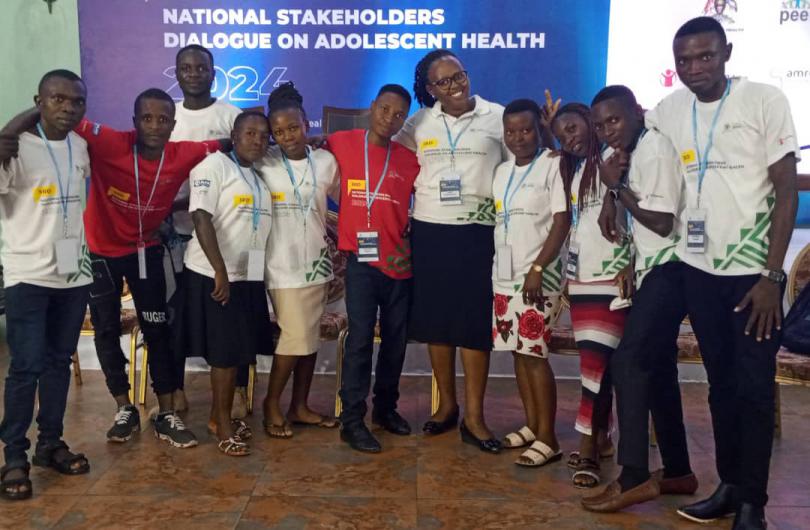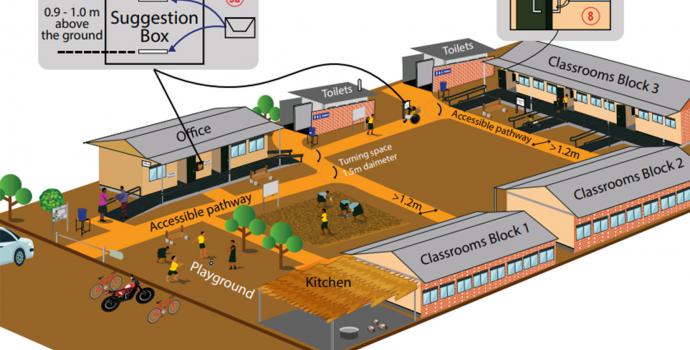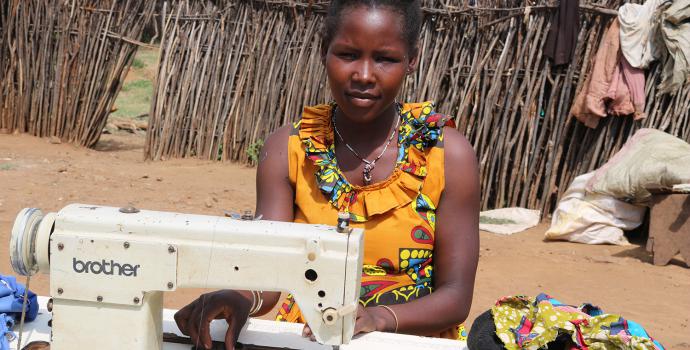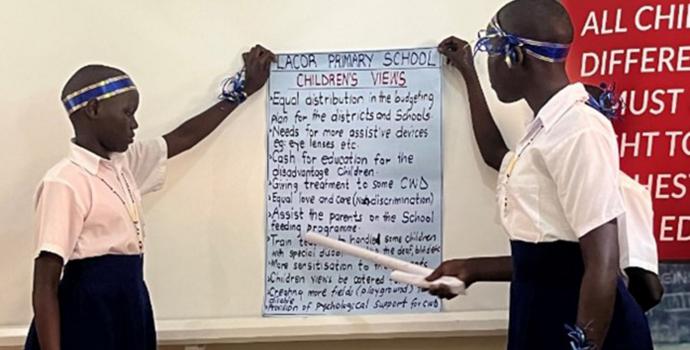CSOs advocate for increased funding for adolescent health services

Officials from Civil Society Organizations (CSOs), have asked the government to allocate specified amount of money for adolescent health services.
“Currently, there is no direct funding for adolescent health services. As such, the Health Ministry is lumping the adolescent health services into maternal child health services,” the head of health and nutrition at Save The Children Uganda, Dr. Ronald Kibonire Arineitwe said
Dr. Kibonire urged government; particularly the Health Ministry to allocate a specified amount of money for adolescent health services.
In her key note speech read by Dr. Rachel Beyagira who is the acting commissioner adolescent health and School health at the Health Ministry, Dr Olive Sentumbwe- Mugisa from World Health Organization (WHO) said adolescents and young people are exposed to risks and choices such as violence, mental health challenges, alcohol, and substance use and for girls particularly, hence for control over their sexual and reproductive health is a reality.
In regard, the executive director Peer To Peer Uganda (PEERU), Moses Bwire said ensuring the health and well-being of adolescents is not just a moral obligation but a strategic investment in the country’s future.
“Healthy adolescents are more likely to grow into healthy adults, contributing to a more prosperous and resilient society,” Bwire said.
Despite the critical importance of adolescent health, there are a number of challenges the young people face ranging from lack of information related to adolescent health services.
In addition, the allocation of financial resources specifically targeting adolescent health is insufficient. Bwire said many adolescents lack access to essential health services, including sexual and reproductive health care, mental health services, and preventive care.
Worth noting, the implementation and provision of health services is guided by policy. Yet, the policy environment also presents challenges, Dr. Kibonire said. For instance, the current the implementation of the adolescent health services is guided by the 2012 policy. Not for getting, a lot of things have changed, hence the need for an update on the policy. This, according to Dr. Kibonire will guide on how the adolescent health services are offered by health workers and other stakeholders.
While there are existing policies aimed at improving adolescent health, implementation remains inconsistent, Bwire noted
“Gaps in policy coverage, limited intersectional collaboration, and insufficient engagement with adolescents themselves further hinder progress,” he said
Provide basic needs
The member of Parliament Bwamba county in Bundibugyo district Richard Gafabusa called for concerted effort to support issues of adolescent health, especially, menstruation and menstrual health. Dr. Richard noted that this will enable them get the right information, develop confidence and accept it is as a natural process.
Failure to support the young girls has got huge implications. For example, if parents and guardians do not support the young girls, it is likely that they will get it from people who do not have good intentions.
“Without providing them with necessary needs, the girls will be lured into sexual relationships that will culminate into unwanted teenage pregnancies, early marriages, and even sexually transmitted diseases” he said.
The remarks were made during the just concluded 3rd National Stakeholders Dialogue on Adolescent Health 2024 under the theme: “Enhancing Adolescent Health Financing and Policy Environment in Uganda,” on June 19, 2024 at Imperial Royale Hotel Kampala.
The Dialogue attracted over 170 participants with 90% being adolescents. Also in attendance are officials from the Health Ministry, Ministry of Gender labour and social Development and executive directors from civil society organizations.
The meeting has been organised by Peer to Peer Uganda (PEERU) in collaboration with the Health Ministry, with support from development partners such as AMREF health Africa –Uganda, Save the Children, Uganda Cares, Plan International, CEHURD, and tiko among many others.
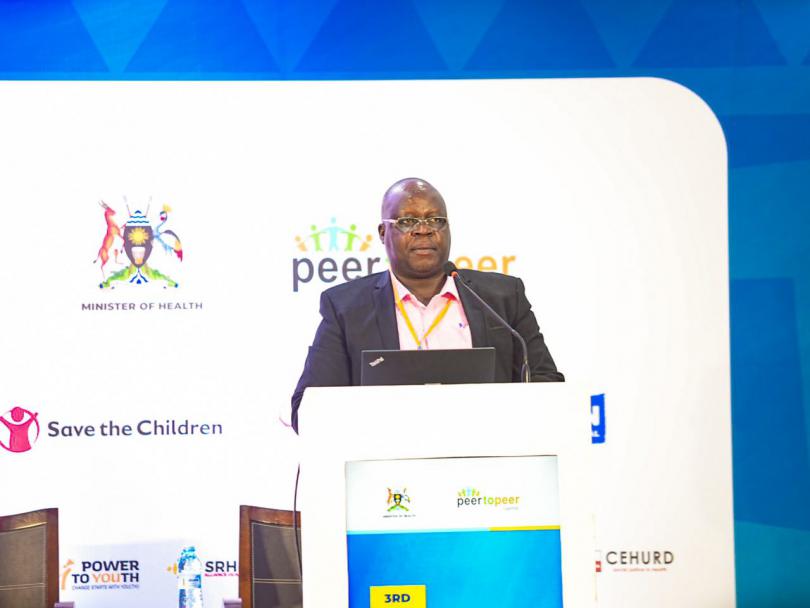
Dr. Ronald Kibonire Arineitwe speaking at the event.
Adolescents speak out
Sylvia Nasirumbi Khisa who is a youth advocate working with AMREF Africa in Bugiri district called for the need to offer adolescent with sexuality education. “Parents have relegated the role of teaching their children about sexuality to teachers who are also very busy,”
This according to Nasirumbi integrating sexuality education into the school curriculum will help access information about their body changes including menstruation. Not to mention, the dangers of engaging in sexual intercourse including teenage pregnancy of which the national figure stands at 24%, according to the national health Demographic Survey 2022 report, she said
Government through the Ministry of Education in 2018, developed and launched the sexuality education framework for the in school. The guidelines stipulate that everybody within school must have the sexuality education.
Saidat Nakijjoba who is a peer educator working with Plan International in Buyende district asked for youth friendly corners where young people can access health services and information.
Nakijjoba urged schools to set up changing rooms that are well stocked with sanitary pads, plus soap and water to ensure menstrual hygiene.
Shamin Wokobera who represents young people with disabilities working with AMREF Africa said despite government intervention, several young people living with disability still grapple with accessing information on adolescent health services.
Wakobera said often adolescents with visual impairment fail to access information because it is not available in brail, and those with hearing problems have no sign language interpreters.
She urged government to provide interventions for adolescents living with disabilities.
Adolescent and youth population
Adolescents make up a significant portion of Uganda's population. Preliminary results of the 2024 National Population and Housing Census reveal that adolescents and youth constitute about 22.7 percent of the Ugandan population. This implies that out of 45.9 million people, about 10,419,300 are adolescents and youth.
